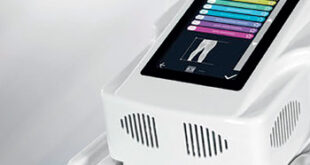By Renee Chillcott, LMHC
Concussions are getting more and more attention these days and as the focus on NFL football players experiencing residual effects of concussions many years later is making headlines, youth sports officials are taking action. More knowledge is being given to referees and parents about the risk and symptoms and more physicians and ER’s are screening and testing for concussions as well. But what is the treatment?
 First, what is a concussion? As seen in countless Saturday morning cartoons, a concussion is most often caused by a sudden, direct blow or bump to the head. The brain is made of soft tissue. It is cushioned by spinal fluid and encased in the protective shell of the skull. When a person sustains a concussion, the impact can jolt the brain. Sometimes, it literally causes it to move around in the head. Traumatic brain injuries can cause bruising, damage to the blood vessels, and injury to the nerves. The result? The brain doesn’t function normally. If a concussion has occurred, vision may be disturbed, equilibrium may be lost, or unconsciousness may occur, but doesn’t have to. In short, the brain is confused. That’s why cartoon characters often saw stars.
First, what is a concussion? As seen in countless Saturday morning cartoons, a concussion is most often caused by a sudden, direct blow or bump to the head. The brain is made of soft tissue. It is cushioned by spinal fluid and encased in the protective shell of the skull. When a person sustains a concussion, the impact can jolt the brain. Sometimes, it literally causes it to move around in the head. Traumatic brain injuries can cause bruising, damage to the blood vessels, and injury to the nerves. The result? The brain doesn’t function normally. If a concussion has occurred, vision may be disturbed, equilibrium may be lost, or unconsciousness may occur, but doesn’t have to. In short, the brain is confused. That’s why cartoon characters often saw stars.
What activities/injuries can cause a concussion?
Fights • Falls • Playground injuries
Car Accidents/Whiplash
Bike Accidents/Skateboarding/Roller Skating
Any sport or activity such as football, boxing, hockey, soccer, skiing, or snowboarding
Even water sports can cause concussions, and more…
Who is most at risk?
Infants • Kids • Teens • Adults • Elderly
According to the Mayo Clinic, the treatment for a concussion is rest, and if a headache occurs, a pain reliever is recommended. But what if one has been evaluated, diagnosed, and rested, but still having symptoms?
Here’s an example of what we see in our office:
Jessica is a 12-year-old who, while at soccer practice one day, struck the ball with her head the wrong way, which resulted in a convulsion. Mom and Dad promptly took her to be evaluated where she was scanned, examined, and diagnosed with a concussion. She instantly had a headache after striking the ball, and she was told to rest and take pain relievers. The headache persisted, and she was set up on hospital home-bound (home school for medical reasons) for the remainder of her school year. The headache was relentless, and it made sleep difficult. Mom and Dad tried everything, and they took her everywhere. She went to the top-notch hospitals and saw the leading neurologists. The solution was a cocktail of medications prescribed so that she could sleep and function, although they did very little to reduce the pain. The headache continued, non-stop for almost 12 months before she walked into my office.
From our point of view, a concussion is like a bruised muscle or sprained joint: upon initial impact or injury, there’s swelling. The body does this to promote healing. Just like a sprained wrist, this swelling is uncomfortable. So, if a wrist is sprained, does one just rest and see if the swelling goes down? According to the Mayo clinic, in addition to rest, elevation of the area, and taking anti-inflammatory medications, it is also recommended to add ice therapy. Cold therapy closes capillaries and reduces blood flow (swelling), as well as relieves discomfort. But, how does one apply an ice pack to the brain?
Neurofeedback acts as an ice pack for the brain. Through neuron reorganization, blood flow is affected, and there’s less chance of inflammation to persist over time. We also recommend natural anti-inflammatory supplements such as Turmeric and Omega-3’s to reduce inflammation.
That brings us back to Jessica. The inflammation in her brain that was supposed to “go down” or reduce with rest and medication, had not reduced and was, instead, causing interference and pain. With just two Neurofeedback sessions, she was experiencing periods of time without a headache. This was the first time in 12 months. However, because the inflammation had remained for a prolonged period of time, it would take several more repetitive sessions before she would experience consistent relief from the headache as well as improved mental ability and restored school performance.
What are some of the signs of a concussion?
- confusion or feeling dazed
- clumsiness
- slurred speech
- nausea or vomiting
- headache
- balance problems or dizziness
- blurred vision
- sensitivity to light
- sensitivity to noise
- sluggishness
- ringing in ears
behavior or personality changes - concentration difficulties
- memory loss
Prevention is, of course, the best course of action when it comes to concussions. Wearing protective gear and being taught how to properly engage in head impact sports can help reduce the incidence of concussions. Neurofeedback immediately following an impact can also help prevent further injury to the brain or residual effects from the impact.
What are the signs that a concussion needs further treatment?
- continuation of the above symptoms
- decrease in school performance or a drop in grades
- difficulty with sleep or persistent change in sleep pattern
- no longer being good at something that once came naturally (ex: “I was a good speller, now I can’t spell well at all.”)
- difficulty with short term memory or odd behavior while performing easy tasks
In our experience, we have found that immediate Neurofeedback (after evaluation from a medical physician, if needed) for a concussion can significantly reduce the amount of treatment needed. One or two sessions may be all that is needed to help reduce the swelling and prevent impairment. So, be sure to call your local Neurofeedback practitioner after any head injury or mild concussion.
WHAT IS NEUROFEEDBACK?
Neurofeedback has been studied and practiced since the late 60’s. It is exercise for your brain; allowing you to see the frequencies produced by different parts of your brain in real-time and then through visual and auditory feedback, teaches the brain to better regulate itself. Neurofeedback can be used to help detect, stimulate, and/or inhibit activity in the brain safely and without medication. It can help restore a wider “range of motion” in brain states, much like physical therapy does for the body.
While the client sits comfortably watching a movie or pictures appear on the screen (a calm and focused state), the EEG equipment measures the frequency or speed at which electrical activity moves in the areas where electrodes have been placed. This information is sent to the therapist’s computer. The therapist is then able to determine what frequencies are out of balance. For example, when the EEG shows that you are making too many “slow” or “sleepy” waves (delta/theta) or too many “fast” waves (high beta), the therapist adjusts a reward band (on the therapist’s screen) to encourage more balanced activity. This encouragement or “reward” happens through an auditory reinforcement of “beeps” and sometimes through visual reinforcement of changes on the client’s screen.
It is important to understand that the neurofeedback approach does not “cure” or “fix” your brain. We teach and guide your brain to produce frequencies which help it relax and/or focus. We provide the brain with gentle “challenges” and encouragement in a user-friendly, stress-free format so it learns to regulate or shift to healthier states more smoothly on its own at the appropriate time.
WHAT TYPES OF CONDITIONS DOES NEUROFEEDBACK HELP?
Symptoms of these conditions, among others, can improve through neurofeedback training:
• Anxiety • Sleep disorders • Depression • ADD/ADHD
• Sensory processing disorder • Bipolar Disorder
• Seizure disorders • Auditory/visual processing • Chronic pain/Fibromyalgia • Migraines/headaches • Traumatic brain injuries • Stroke • Cognitive decline
• Peak performance •Oppositional defiant disorder
• Rages/mood swings • Attention/focus/concentration • Reactive attachment disorder • Autism/Asperger’s • Learning disabilities • Obsessive Compulsive Disorder
WHAT IS AN EXAMPLE
OF IMPROVEMENTS I MAY SEE?
At our center, our goal is to teach you how to tune into your own functioning. With children, we also teach the parents how to look at overall functioning rather than piecing together events or moments. We help you open your mind to possibilities with Neurofeedback rather than give too many examples that confuse the process or feel like a placebo. Changes you may experience or observe after a session are indicative of a learning process that will lead to improved functioning. Examples of those positive changes may be improvements in:
- Sleep patterns/quality of sleep
- Energy levels, calmer or more activated
- Ability to focus or concentrate
- Physical symptoms such as pain, headaches, migraines, tics, balance issues
- Mood or emotions
- Motivation and organization
- Feelings of Well Being
- Obsessive behaviors or thoughts
- Memory/cognitions
- Anxiety patterns or trauma patterns
- Coping
- Regulation
- Learning, communicating, and/or performance
HOW DOES A “BEEP” OR SOUND TRAIN MY BRAIN TO WORK BETTER?
The auditory or sound reward that corresponds to an increase or decrease in desired brainwave activity can affect the brain on a neurological level. Auditory reward stimulates auditory pathways, impacts the vestibular system, and has many connections to the reticular activating system, which modulates wakefulness and attention. These systems operate in our brains without conscious effort. Therefore, neurofeedback teaches your brain through automated learning with little or no behavioral effort. Another way to say this is that neurofeedback involves operant conditioning or learning. This type of learning teaches us through a reinforced reward system. The auditory reward (beep) is delivered on a schedule of reinforcement that promotes optimal learning; not too hard and not too easy. This schedule of reinforcement or reward provides just the right amount of resistance to evoke a positive learning pattern.
HOW MANY SESSIONS ARE NEEDED
TO BEGIN SEEING RESULTS?
As the brain learns, you will see the changes. However, everyone learns at different speeds, so it cannot be determined how quickly someone will learn. On average, children take about 10-20 sessions to see changes and we can discuss what to expect during the intake appointment. For adults changes are usually noticed within 10 sessions. Total treatment is an average of 40 sessions; however, we individualize all aspects of treatment and find that some people need more and some less.
WHAT IS A QEEG (QUANTITATIVE EEG)
OR BRAIN MAP AND DO I NEED ONE?
The QEEG is a quantitative EEG. It’s also called a brain map and does just that…it gives us a map of what is going on with the entire brain at one time. We attach electrodes to the whole head, 19 spots, and then record the brain waves with his eyes open for 5 minutes and with his eyes closed for 10 minutes. This recording is then read and analyzed. We can provide you with a summary of significant findings and show the results of analyzing the data several different ways. The brain activity is not only compared spot by spot over the entire head, but we can also look at connections, symmetry, and how different parts are communicating. It can help us see what areas need to be addressed more efficiently than just training spot by spot or by looking at a surface or “quick” EEG.
We don’t always need this data to make an improvement in symptoms, but we do recommend it in certain situations. A QEEG can also be helpful information when diagnosing and/or trying to decide the best medication/supplement recommendations.
DOES NEUROFEEDBACK HURT?
Neurofeedback is a non-invasive, non-medication, and most importantly a non-painful approach. Your experience will be very relaxing and positive. We gently teach your brain how to regulate more efficiently and do not force your brain into a brain state that is not comfortable.
HOW DO I GET STARTED?
Getting started is easy. The Brain and Wellness Center staff will answer all of your questions, and help you get scheduled with a free telephone consultation. E-mail, text message or call us today! Brain and Wellness Center, 5458 Town Center Rd., Suite 13, Boca Raton, FL 33486. (561) 206-2706, e-mail us at info@bocabraincenter.com, or text us at (561) 206-2706 or visit our website at www.BocaBrainCenter.com.
Brain and Wellness Center
5458 Town Center Rd., Suite 13,
Boca Raton, FL 33486.
(561) 206-2706
info@bocabraincenter.com
www.BocaBrainCenter.com.
References:
http://www.webmd.com/brain/concussion-traumatic-brain-injury-symptoms-causes-treatments
http://www.mayoclinic.org/diseases-conditions/concussion/basics/definition/con-20019272
Research:
http://www.isnr.net/neurofeedback-info/mtbi.cfm
definition/con-20019272
Research:
http://www.isnr.net/neurofeedback-info/mtbi.cfm
 South Florida Health and Wellness Magazine Health and Wellness Articles
South Florida Health and Wellness Magazine Health and Wellness Articles




